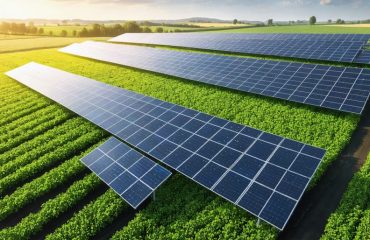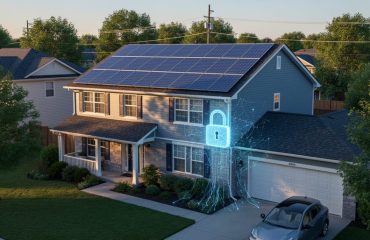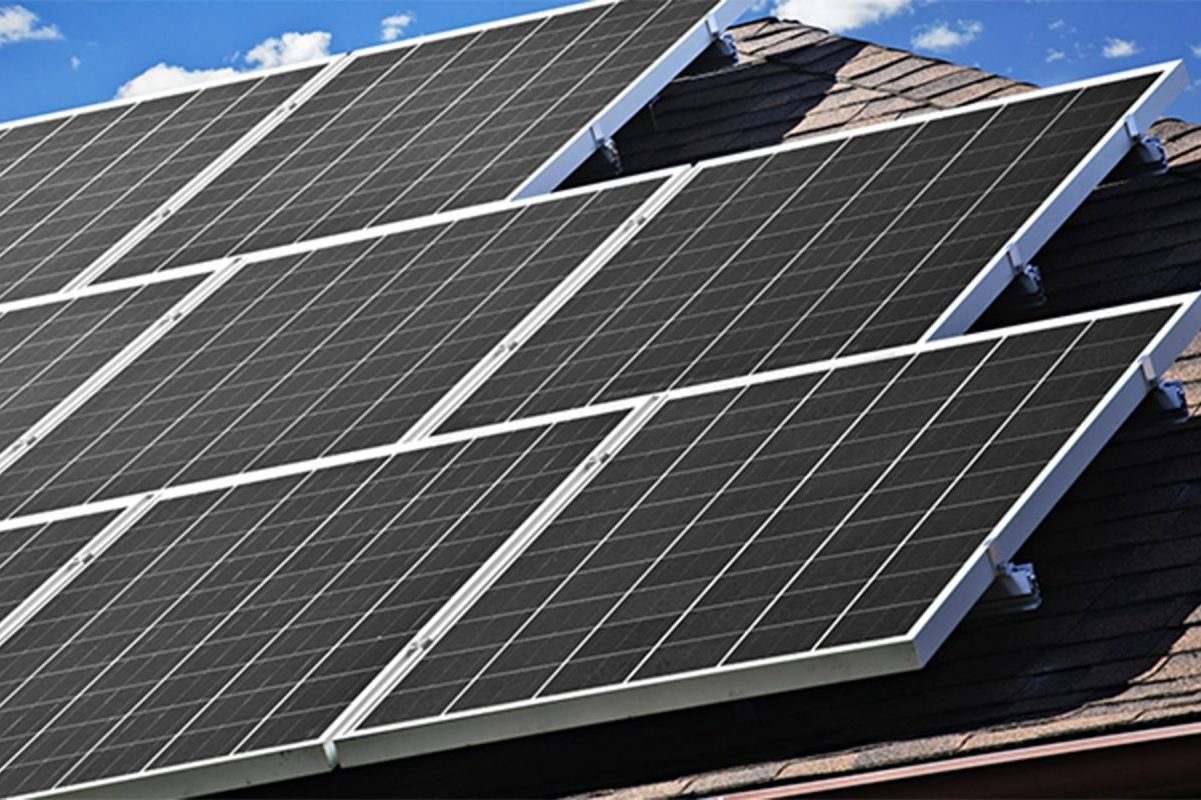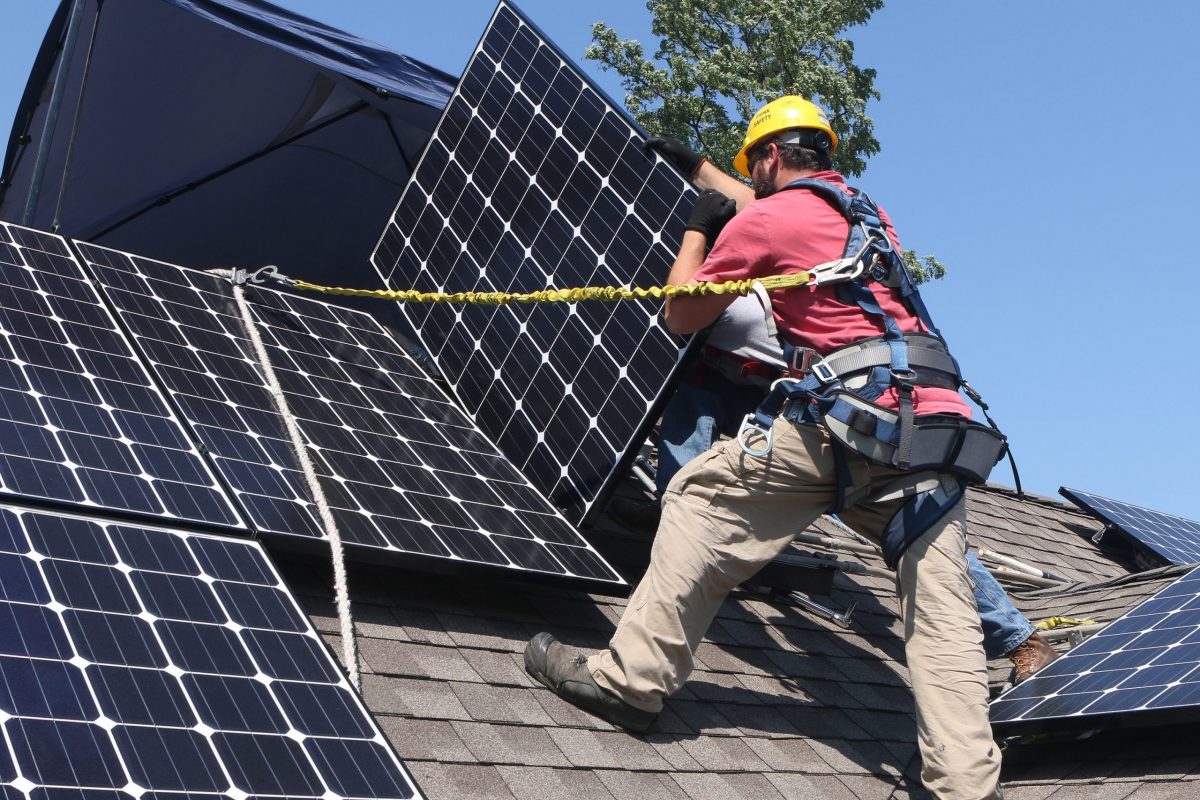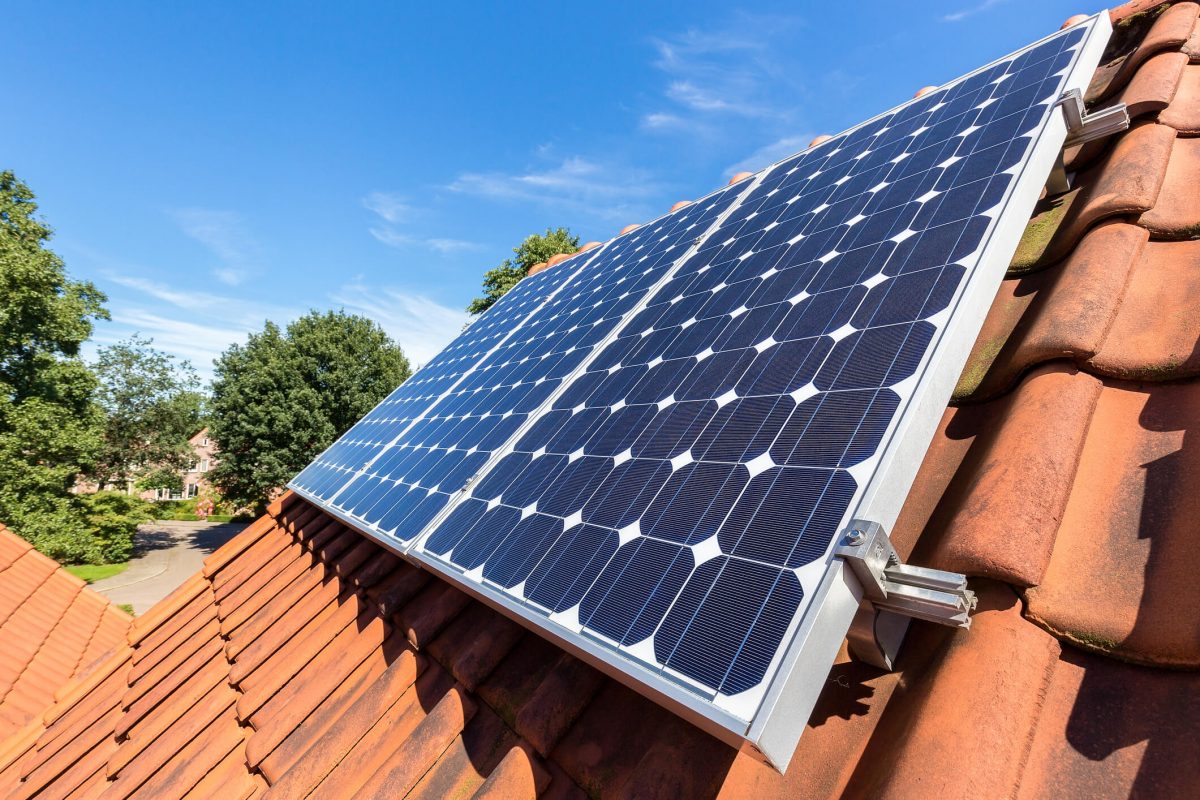Imagine a future where your entire neighborhood powers itself through shared solar panels, creating a resilient, sustainable, and cost-effective energy ecosystem. This vision is already becoming reality through solar energy communities – collaborative initiatives that transform how we generate, share, and consume clean electricity.
Solar energy communities represent a groundbreaking shift in renewable power adoption, moving beyond individual rooftop installations to create interconnected networks of solar infrastructure that benefit entire neighborhoods. By pooling resources and sharing generated power, these communities are revolutionizing access to clean energy while dramatically reducing electricity costs for participants.
What makes these initiatives particularly powerful is their ability to democratize solar power, making it accessible to those who previously couldn’t participate – including renters, apartment dwellers, and homeowners with unsuitable roofs. Through innovative subscription models and shared ownership structures, community solar projects are breaking down traditional barriers to renewable energy adoption while strengthening local bonds and fostering environmental stewardship.
As climate concerns grow and energy costs rise, solar energy communities offer a practical, proven solution that combines environmental responsibility with economic benefits. These projects demonstrate how collective action can accelerate our transition to sustainable energy while building more resilient, connected neighborhoods.
What Makes a Solar Energy Community Unique?
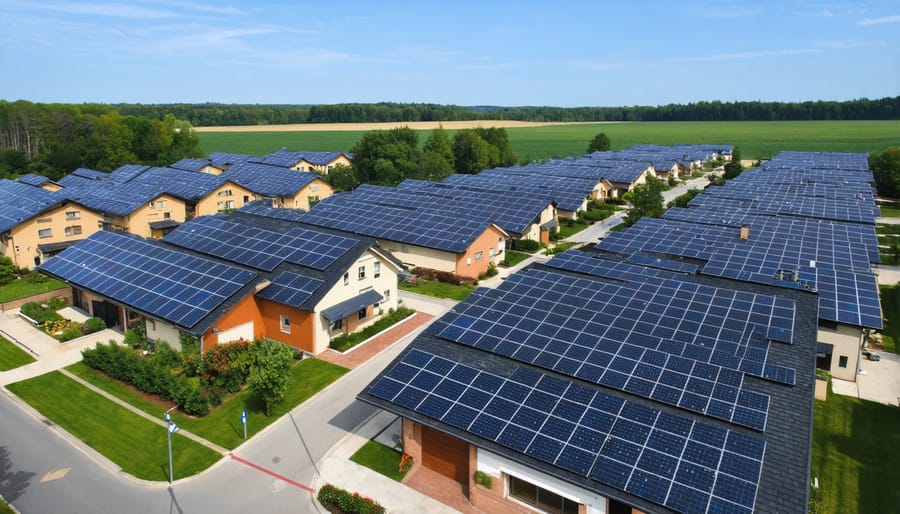
Shared Solar Resources
Community solar arrays represent a revolutionary approach to renewable energy, allowing multiple households to benefit from a single, shared solar installation. Unlike individual solar-powered homes, these shared systems are typically installed in an optimal location within the community, such as an open field or large rooftop.
The generated power is distributed among participating members based on their subscription or ownership share. Each household receives credits on their electricity bill proportional to their share of the solar array’s output. This arrangement makes solar energy accessible to those who can’t install panels on their own properties, including renters and homeowners with unsuitable roofs.
Modern smart grid technology ensures efficient power distribution, while sophisticated monitoring systems allow members to track their energy production and consumption in real-time. The shared maintenance costs and economies of scale often result in lower overall expenses compared to individual installations, making this a cost-effective solution for sustainable community living.
Smart Grid Integration
Smart grid integration allows community solar projects to seamlessly connect with modern power infrastructure, creating a more resilient and efficient energy system for everyone. These systems use advanced meters and monitoring equipment to track energy production and consumption in real-time, ensuring smooth power distribution throughout the community.
When solar panels generate excess electricity during peak sunlight hours, the smart grid automatically redirects this power to where it’s needed most. This intelligent distribution helps balance the load across the network and reduces strain on traditional power plants. During cloudy days or nighttime, the grid supplies conventional power to maintain consistent service.
The integration also enables two-way communication between the solar installation and utility companies, allowing for better energy management and faster response to any issues. Community members can monitor their energy usage through user-friendly apps, helping them make informed decisions about their consumption patterns.
Most importantly, smart grid technology makes it possible for participants to receive accurate credits on their utility bills based on their share of the solar production, making the benefits of community solar both tangible and transparent.
Community Infrastructure Powered by the Sun
Public Lighting Systems
Public lighting represents a significant opportunity for communities to embrace sustainable energy while reducing operational costs. Modern solar-powered lighting solutions have transformed how neighborhoods illuminate their streets, parks, and common areas. These systems typically include high-efficiency LED lights powered by solar panels, with built-in batteries that store energy for nighttime use.
Communities that have implemented solar street lighting report up to 80% reduction in energy costs compared to traditional grid-powered systems. These lights operate independently of the power grid, continuing to function during outages and providing essential safety and security benefits. Many modern units come with smart features like motion sensors and automatic dimming, further increasing their efficiency.
Beyond the practical benefits, solar-powered public lighting creates visible symbols of a community’s commitment to sustainability. These installations often serve as conversation starters, inspiring residents to explore solar options for their own homes. With minimal maintenance requirements and lifespans exceeding 20 years, these lighting systems represent a smart, long-term investment in community infrastructure.
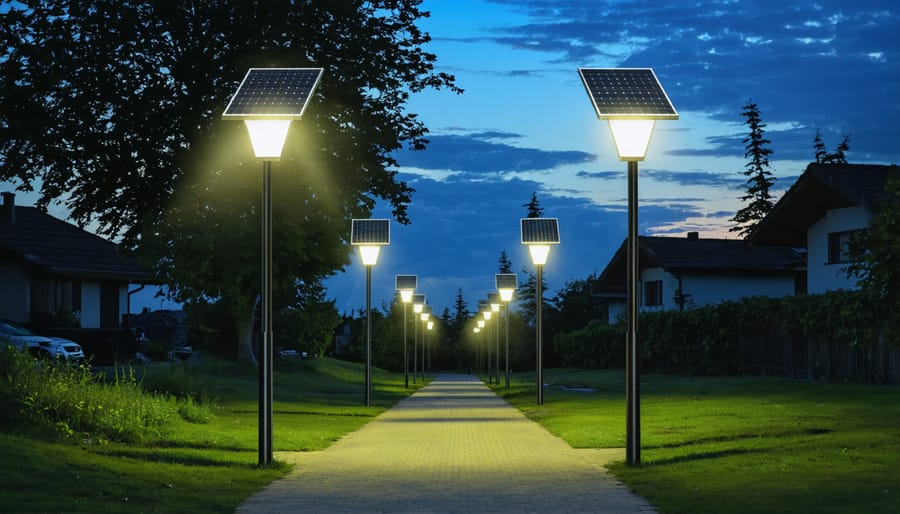
Charging Stations
Modern solar energy communities are leading the charge in sustainable transportation with innovative charging infrastructure. At the heart of these communities are solar-powered parking lots equipped with EV charging stations, making clean energy readily available for residents and visitors alike.
These charging hubs typically feature Level 2 chargers that can fully power an electric vehicle in 4-8 hours, perfect for workplace or residential parking. Many communities also install rapid DC charging stations at central locations, providing quick 30-minute charges for drivers on the go.
Beyond electric vehicles, these stations often include convenient USB ports and wireless charging pads for mobile devices, powered entirely by solar energy. This thoughtful integration of charging infrastructure helps reduce the community’s carbon footprint while providing practical amenities for modern living.
The charging stations are strategically placed throughout the community, often near shopping centers, community centers, and residential complexes, ensuring easy access for all residents. Smart monitoring systems help users track availability and charging status through mobile apps, making the experience seamless and user-friendly.
Community Buildings
Community buildings are increasingly embracing solar energy as a cornerstone of sustainable infrastructure. Schools, community centers, and public facilities across the country are installing solar panels to reduce operational costs while demonstrating environmental leadership. These installations often include solar-powered water systems and advanced energy storage solutions to maximize efficiency.
Local schools have been particularly successful in implementing solar solutions, using the installations as both cost-saving measures and educational tools. Students can learn about renewable energy firsthand while their schools enjoy reduced electricity bills, creating a win-win situation for education and sustainability.
Community centers powered by solar energy serve as gathering spaces that showcase the practical benefits of renewable energy. Many feature real-time energy monitoring displays that help visitors understand how solar power works and its positive impact on the environment. These buildings often become focal points for community education about sustainable practices.
Public libraries, government offices, and recreational facilities with solar installations demonstrate how clean energy can power essential community services. The money saved on energy costs can be redirected to improve public services or fund other community projects. These buildings also serve as resilient power sources during grid outages, providing emergency shelter and charging stations when needed.
By incorporating solar power into community buildings, municipalities create visible examples of sustainable practices while generating long-term savings for taxpayers.
Benefits for Residents and Communities

Cost Savings and Economic Benefits
Participating in a solar energy community offers substantial financial benefits for both residents and local governments. Homeowners typically see a 20-30% reduction in their monthly energy bills, with some communities reporting savings of up to $900 annually per household. These savings begin immediately upon joining and continue to grow as traditional energy costs rise.
The community-based approach significantly reduces individual installation costs through bulk purchasing power and shared maintenance expenses. While a private solar installation might cost $15,000-$25,000, community solar participants often pay no upfront costs and start saving from day one through subscription-based models.
Municipalities also reap economic advantages. Solar communities generate local jobs in installation, maintenance, and administration. Property values in areas with community solar projects typically increase by 3-4%, contributing to a stronger local tax base. Additionally, cities save on public utility costs by powering municipal buildings and infrastructure with community solar energy.
Many states offer tax incentives and rebates for community solar participation, further enhancing the financial benefits. Some communities have implemented innovative payment models, such as pay-as-you-go options and sliding scale fees based on income, making solar energy accessible to residents across all economic backgrounds.
The long-term economic impact extends beyond direct energy savings, creating a more resilient and sustainable local economy while protecting residents from future energy price volatility.
Environmental Impact
Solar energy communities make a significant positive impact on the environment by reducing reliance on fossil fuels and decreasing carbon emissions. When a neighborhood collectively embraces solar power, the environmental benefits multiply exponentially. A typical community solar project can offset hundreds of thousands of pounds of carbon dioxide annually – equivalent to taking dozens of cars off the road or planting thousands of trees.
These sustainable communities help combat climate change by reducing greenhouse gas emissions and air pollution. By generating clean, renewable energy locally, they decrease the demand for power from coal and natural gas plants, which are major contributors to air quality issues and environmental degradation.
The environmental advantages extend beyond carbon reduction. Solar communities require minimal water usage compared to traditional power plants, helping preserve local water resources. They also reduce the need for new transmission lines and power infrastructure, minimizing habitat disruption and land use impacts.
Additionally, community solar projects often incorporate environmentally friendly landscaping practices, such as planting native species and creating pollinator habitats around solar installations. These thoughtful design choices help support local ecosystems while generating clean energy.
The collective impact of solar communities creates a ripple effect, inspiring neighboring areas to adopt sustainable practices and contributing to broader environmental goals. As more communities embrace solar power, they demonstrate how local action can drive meaningful environmental change while bringing communities together around a common purpose.
Getting Started in Your Community
Planning and Implementation
Initiating a solar energy community project begins with gathering interested neighbors and conducting a feasibility study. Start by organizing community meetings to gauge interest and identify potential participants. Consider forming a steering committee to oversee the project’s development and manage communications.
The next crucial step involves site assessment and technical planning. Work with qualified solar installers to evaluate suitable locations for panel installation, whether on rooftops or shared community spaces. They can help determine the optimal system size based on collective energy needs and available space.
Financial planning is equally important. Research available funding options, including federal and state incentives, grants, and cooperative financing models. Many communities opt for power purchase agreements (PPAs) or form cooperative entities to manage costs and benefits effectively.
Engage with local authorities early to understand zoning requirements and obtain necessary permits. Working with experienced legal counsel can help navigate regulations and establish fair agreements among participants. Remember to develop a clear maintenance and operation plan, including responsibilities for ongoing system care and benefit distribution among community members.
Success often depends on maintaining transparent communication throughout the planning and implementation phases, ensuring all stakeholders remain informed and engaged.
Available Resources and Support
Several financial resources and support systems are available to help communities transition to solar energy. The U.S. Department of Energy offers various grants and incentives through programs like the Solar Energy Technologies Office (SETO), which provides funding for community solar projects. Local utilities often partner with communities to offer rebates and special financing options.
Technical assistance is readily available through organizations like the National Community Solar Partnership, which connects communities with expert consultants and provides free educational resources. State energy offices frequently offer guidance and support services, helping communities navigate the planning and implementation processes.
Many communities can access specialized loans and financing options through green banks and community development financial institutions. These organizations often offer favorable terms specifically for renewable energy projects. Additionally, non-profit organizations like the Solar United Neighbors provide valuable resources, including project planning guides, cost calculators, and networking opportunities with other solar communities.
For ongoing support, many states maintain databases of certified solar installers and technical experts who can assist with maintenance and optimization of community solar systems.
Solar energy communities represent a powerful shift towards a more sustainable and connected future. By combining shared solar infrastructure with smart technology and community engagement, these initiatives are revolutionizing how we think about and use energy. The benefits extend far beyond reduced utility bills, creating stronger neighborhoods, increasing property values, and building resilience against power outages and rising energy costs. As more communities embrace solar power, we’re seeing the emergence of a new energy landscape where neighbors support each other while contributing to environmental preservation. With advancing technology and decreasing costs, solar communities are becoming increasingly accessible, offering a practical pathway to sustainable living that benefits both current residents and future generations. The transformation to community solar isn’t just about energy—it’s about building a brighter, cleaner, and more collaborative future for all.




